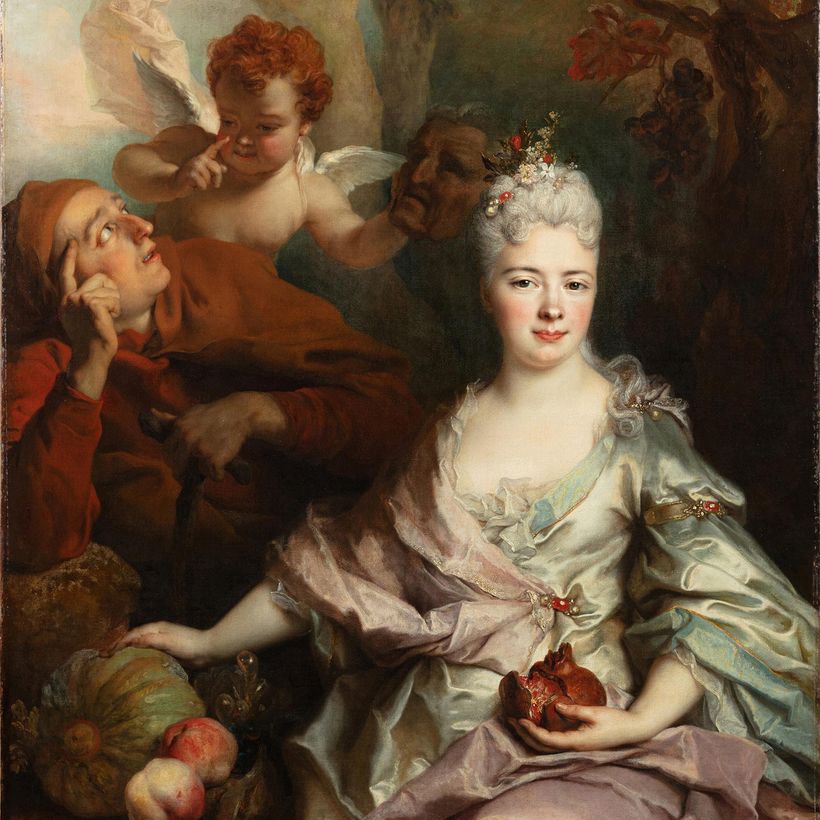Pauline Baer de Perignon spent more than four years trying to piece together the extraordinary collection of her great-grandfather Jules Strauss, which was stolen by the Nazis. It consisted of Impressionist paintings by Degas and Renoir (at least 30 by each of them), Sisley (17), several by Delacroix and Courbet, and French Regency–era furniture, ornaments, and drawings.
Although Strauss—a member of a prominent Jewish banking family who was born in Frankfurt in 1861 and settled in Paris in 1881—sold some works before World War II, he was what one dealer called “a horizontal collector, meaning that he only bought things he loved, in any genre. They had to be special in some way, whatever their monetary value…. And he loved to live among his accumulated treasures, among works of art that made his life beautiful.” Strauss died in 1943, before he could see the war end.

Baer de Perignon’s forthcoming memoir, The Vanished Collection, translated from the French by Natasha Lehrer, is a heartwarming and fascinating story by a superlatively gifted writer and first-rate reporter. The book is also a testament to patience and forbearance.
In the Deep
In the course of her research, Baer de Perignon scoured all the catalogues of Degas exhibitions in France and abroad since 1936. She interviewed or contacted hundreds of art historians, professors, art dealers, and scholars, including Patrick Modiano, who won the Nobel Prize in Literature in 2014.
She visited archives in England, France, Germany, and elsewhere, met with the descendants of well-known W. W. II–era collectors, and studied the activities of the Gestapo and the Einsatzstab Reichsleiter Rosenberg, known to have plundered art collections, libraries, and archives throughout Europe.

She examined the 600 pages of documents containing her grandmother’s 16-year claims process against the German government, which declared that the family had provided insufficient evidence that the works had been stolen or sent to Germany.
She writes that “although the German Museum Association had officially declared its willingness to atone for the crimes of the past by returning expropriated works of art to their owners,” her request for the return of a painting by Nicolas de Largillière in the Dresden State Art Collections was passed around for two years between the museum, the Ministry of Arts and Culture, and the Finance Ministry before it was finally returned to her family, in January 2021.

How, she asks, had her great-grandfather’s painting been hanging in Dresden for more than 20 years without anyone ever really trying to find out to whom it belonged?
What particularly helped in securing the painting was documentation Baer de Perignon had compiled with a lawyer, “along with support from the French embassy in Germany and that of Germany in France.” She wrote, “I wondered if the museum now genuinely wished to return the painting or if it was just giving in to political pressure.”

Baer de Perignon is also critical of museum curators for whom “it is not uncommon to criticize Jewish families who sell their inherited works, accusing them of caring only about the money—the ultimate anti-Semitic slur—but what are families supposed to do when several descendants find themselves joint owners of a valuable work of art?”
How had her great-grandfather’s painting been hanging in Dresden for more than 20 years without anyone ever really trying to find out to whom it belonged?
The Largillière, Portrait of a Lady as Pomona, will be auctioned at Sotheby’s in New York on January 27, and is estimated to sell for $1 million to $1.5 million. Baer de Perignon says there are 19 heirs.
Her detective work also led, in 2017, to the return of a Tiepolo drawing that had been seized from her family by the Nazis and transferred to France in 1948, where it was placed in the Department of Prints and Drawings at the Louvre.
Audrey Azoulay, who was France’s minister of culture when the Tiepolo was returned, was amazed that the drawing had belonged to Strauss. Baer de Perignon remembers Azoulay saying how absurd it was that the drawing had been held for more than 70 years, its owner unknown, at “the very museum that had received generous donations from [Jules] Strauss … Not only was he a benefactor but a long-standing and eminent member of the Society of the Friends of the Louvre.”

In addition to paintings and drawings, Strauss donated 60 antique frames for paintings to the Louvre. Germain Bazin, who later became the Louvre’s chief curator of paintings, thanked Strauss at the time: “Several of the greatest masterpieces in the Louvre owe to him their magnificent antique frames.”
Baer de Perignon has said that, while working on her memoir, she would get up in the middle of the night to write down some thoughts that occurred to her. She deserves to sleep better these days. The Vanished Collection is a remarkable book.
Milton Esterow was the editor and publisher of ARTnews from 1972 to 2014. He currently contributes to The New York Times, The Atlantic, and Vanity Fair

